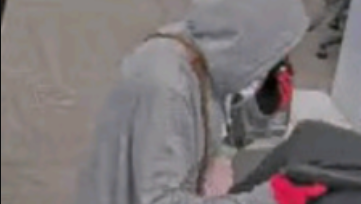Laurier student bringing virtual STEM education to rural students
Posted Jan 23, 2022 01:00:00 PM.
A Wilfrid Laurier M.Ed. student is bringing high-quality STEM education to elementary and middle school students in rural areas through virtual programming.
Formerly a teacher with the Bluewater District School Board who moved onto the nuclear industry, when the pandemic began, the Nuclear Innovation Institute (NII) reached out to him saying they wanted to do something to help students and teachers.
Thus, the coding academy was born — an online program that teaches children to code.
“We were doing 17 classes a week with about 100 students per class in March 2020,” Phillip Craig said. “Since then, it just proved to be so popular, and there seemed to be such a thirst for really good STEM education in this area, that I’ve continued with the NII Explore programs since then.”
Now, Craig is the director of the NII Explore program, helping bring a series of STEM classes to students in rural areas.
They run about 15 classes a week, each program running four weeks. Over the course of the year, they will typically run about 150 different classes. Since launching at the start of the pandemic, they have worked with at least 40 different schools around Ontario.
While virtual schooling has caused countless challenges for students, teachers and parents, Craig said their type of programming actually works better if everyone is at home, because they need people to be on their own computers.
“That really allowed us to do some different things, especially with some schools that don't have enough computers for everyone in the classroom,” he said.
They have a few different programs, from coding to science, all of which are virtual.
“What we're all about here is bringing quality STEM education to rural areas. And we do that in a lot of different ways,” he said.
Each class is one hour long, once a week for four weeks.
“Depending on the grade, they're doing different things,” said Craig. “So maybe they're building their own video game, [or] we have a class where they communicate with the International Space Station using Python, which is a coding language; they can also code their own website,” Craig said.
Their classes for younger grades deal more with the foundations of STEM. For instance, last spring they taught units on soil, energy, space, and the seasons for Grades 3 and under.
Of course, these classes teach STEM subjects. But Craig says they’re also learning resilience and perseverance.
“Coders never get it right the first time. That's just part of it. It doesn't mean you got it wrong. It just means it's not right yet. Those are the real skills we are learning when you learn how to code.”
Teachers from rural areas across Ontario have raved about the programs, claiming that even students who are typically “disengaged” were eagerly participating.
Jennifer McKellar, a Grade 4 teacher at Huron Heights Public School in Kincardine said that her students loved the coding classes and were engaged the whole time.
“Some tried to rush ahead and didn't wait for instructions as they were so enthusiastic and confident,” she said.
“We've been very fortunate to have such a positive response. We are flooded with emails, because currently, coding is mandated to be part of the math curriculum. But with that mandate, a lot of teachers weren't really comfortable — they don’t know how to do that. So we've had a lot of teachers reach out to us and say, ‘Hey, can you help us out with this,’ which we were very happy to do,” Craig said.
“Throughout the past year, teachers have been absolute all stars … They have had so many challenges. So when we come in and just say, ‘Hey, we got this for an hour, you can relax,’ they love that.”
Even so, he said that more often than not, they are noticing the teachers in the back trying to learn things like coding along with the students.
“Science is not my area of expertise, so to have a focused lesson from an enthusiastic and knowledgeable teacher was awesome,” said one Avon-Maitland School Board teacher. “There was just the right mix of movement breaks, games and teaching, and the take home activity was great to extend the learning.”
To keep students engaged online, Craig started utilizing all sorts of creative methods, from reciting a poem of the day, to wearing an inflatable dinosaur costume.
With their summer programming, they even offered a virtual summer camp, with dress up nights where everyone would dress up in costume of some sort.
“When you’re virtual, you have to compete against things like YouTube and Disney Plus, so we have to make sure we’re being entertaining so that kids stay engaged,” he said. “We want the kids to come for the experience, for the fun aspect of it, but to stay for the learning and stay for the code.”
However, as excited as the kids get during these classes, Craig said the teachers themselves are twice as excited to see them learning and engaged.
“Because we can see where that door could take them down the road. Especially in rural areas, where they don't see a lot of stuff like this, it really does open their eyes.
You can follow them on Instagram @niiexplore for fun and easy STEM experiments and activities to keep kids busy, or visit their website at nii.ca/explore.








